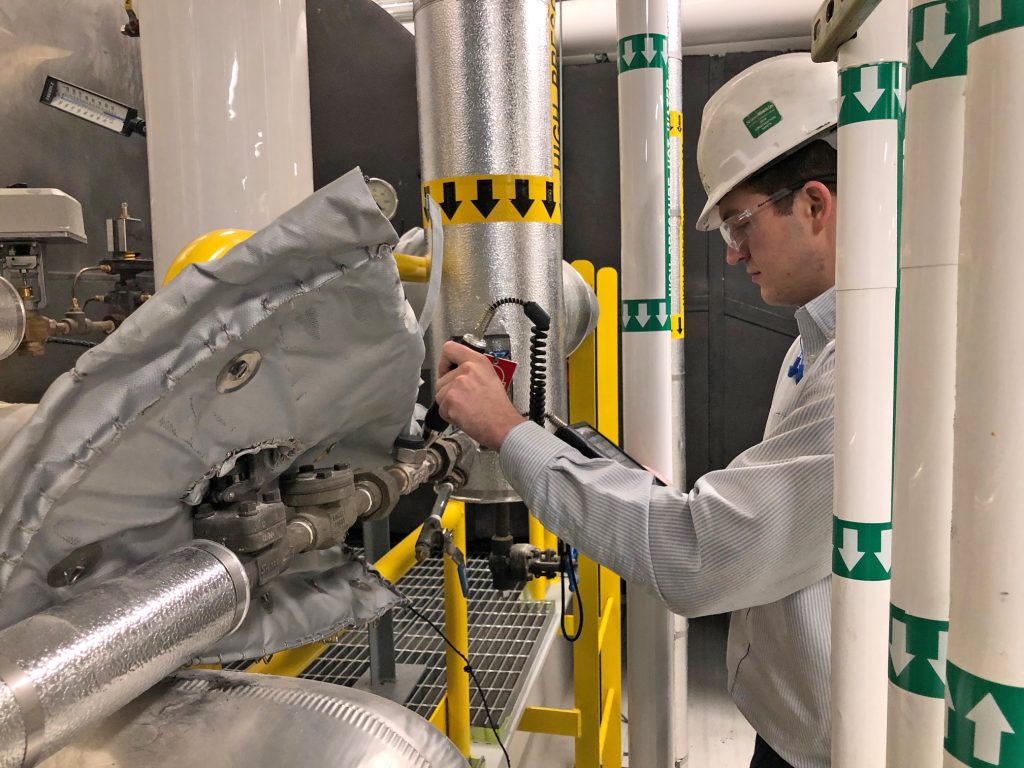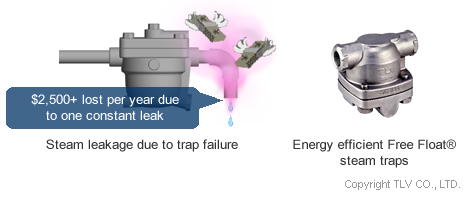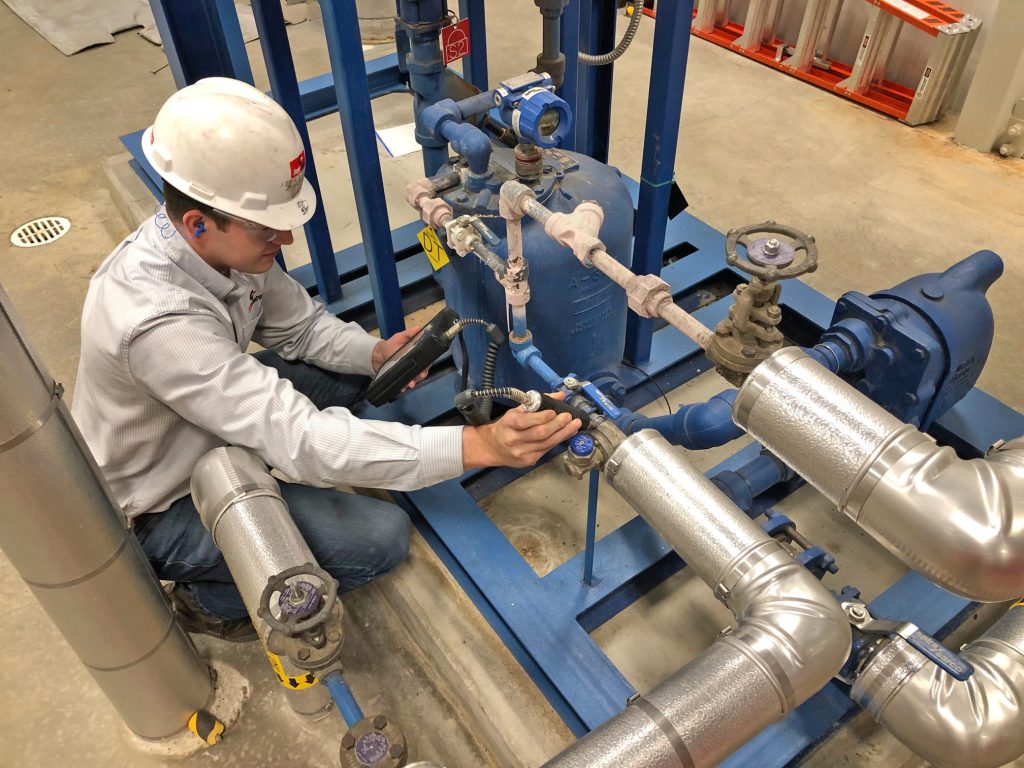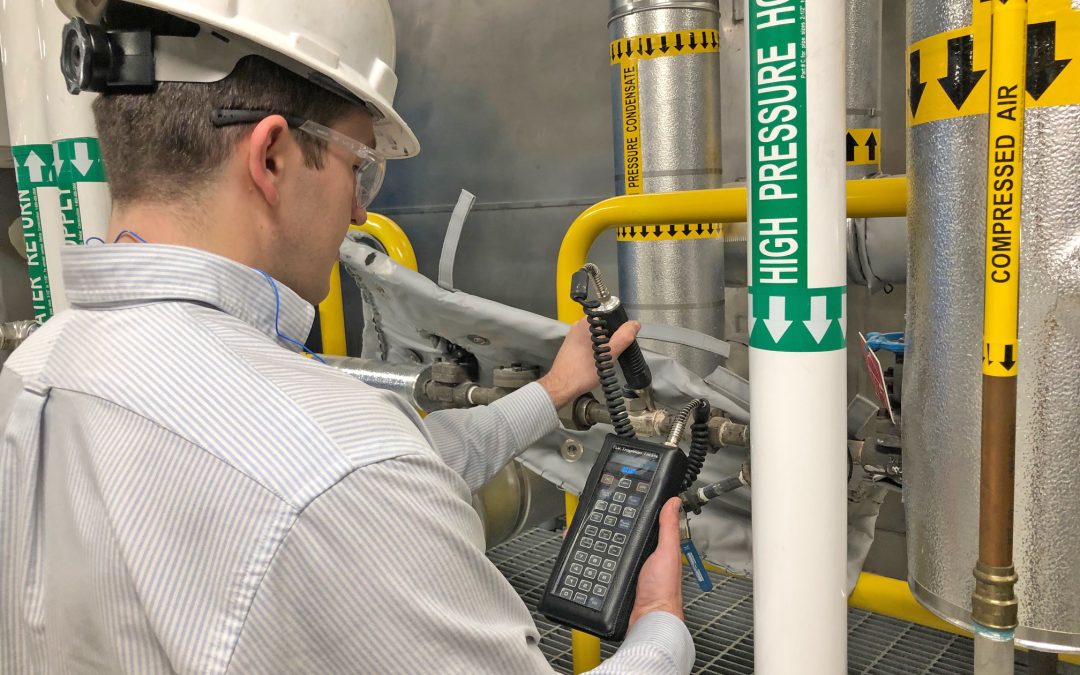We often get asked, “does it make good economic sense to spend the effort for a trap survey”? The answer is always a resounding YES, and starts with explaining the basics of what’s involved, and why
Generally speaking, a Steam Trap Survey is a review of your steam system to identify oversized, misapplied, failing or leaky steam traps. Identifying these traps will not only substantially cut energy waste, and fuel dollars spent, but also will optimize your plant’s performance, improve system reliability, reduce maintenance costs and increase uptime, all while also positively impacting the environment!

Remember, a trap is put in the system to do three things:
- Trap steam
- Remove condensate
- Remove air
There are four (4) types of steam traps most commonly used: Thermostatic, Balanced Pressure, Float & Thermostatic, and Inverted Bucket. These traps have limitations based on system conditions, rendering one better applied in some applications versus another.
Here is why a Trap Survey and dutiful action will accomplish the benefits cited above.
Cut Energy Cost:
Replacing a failed trap(s) that is leaking or blowing through wastes the latent and sensible energy that went into the pound of water to make a pound of steam. This means many additional fuel dollars are spent to make up for this needless loss. TLV, a steam specialties supplier of our choice, offers an online Steam Loss Calculator that can estimate the cost of losses from just one steam trap.

Optimizing Plant Performance:
There are several things the system expert looks for that will impact plant performance, but the main things are proper drip leg location and size, and system stall; condensate backing up into the heat exchange device, slowing the process time, or destroying the product. Improper drip leg location and size can lead to inadequate condensate removal because of a piping exit deficit or loss of required trap pressure differential. And, besides drip leg location and size, system stall can also be caused by improper trap selection or trap fouling from dirt or corrosion.
Improve System Reliability:
As stated above, traps are in the system to trap steam, remove condensate, and assist in removing air. When condensate is not consistently removed from the system piping, carbon dioxide dissolves in the water, forming carbonic acid (H2CO3), which will attack the carbon steel in the piping system, causing numerous leaks. Its aggressiveness is further enhanced with any oxygen in the system, which is why it’s very important to have air vents in the system, augmenting the trap(s). The expert will be looking for these too.
Reduce Maintenance Costs:
When condensate is not properly removed from the steam supply lines, its volume decreases the inside pipe volume, increasing the velocity within the pipe, which increases piping erosion, vibration and resultant noise. It can also cause very dangerous water hammer, which may not only weaken and break piping joints, but also gravely injure or kill plant personnel. These issues (if occurring) need to be recognized and addressed immediately.
Positively Impacting the Environment:
As mentioned above, dutiful trap monitoring and assuring proper trap operation will reduce energy costs substantially. In many cases, it’s upwards of 20-30%! This not only means lowering operational costs, but also lowering emissions to the atmosphere because you’re burning less fuel. A win-win situation!
Increased Uptime:
By optimizing plant performance and improving system reliability, it stands to reason the boiler(s) will be staying online for as long as needed; delivering the steam they were purchased to deliver. From a productivity perspective, these dollars drop right to the bottom line.

Our Trap Survey includes the following:
- A complete list of the traps employed and their respective location.
- Testing of the traps using the latest testing equipment for assured accuracy.
- A report on the findings and recommended changes if any.
- A proposal covering the Audit plus labor & material to cover any changes.
Conserving Energy while improving Safety, Reliability, and the Environment are the Hallmarks of a well-run boiler operation. Tired of dealing with leaking steam traps?
Contact us for a free consultation to discuss how we can test, repair, and manage your steam traps to ensure a long and reliable life.

